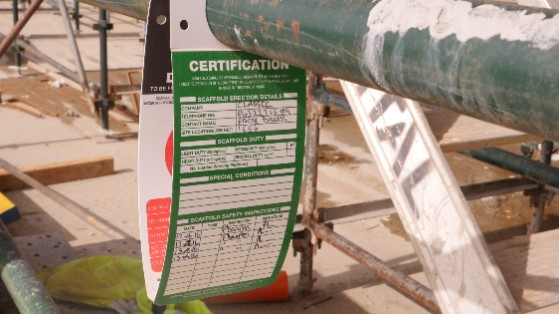
Scaffolding safety
Incident
20 February 2017
Throughout 2016, there were a number of falls from heights in the ACT, many leading to significant injury.
Fast facts
- Working at height is a risk activity.
- There have been more than 470 claims as a result of falls from heights since 2014.
- A high risk work licence is needed for scaffolding activity.
- Know your safety requirements and be vigilant – know your Safe Work Method Statements (SWMS).

Contributing factors
WorkSafe ACT reminds all workers and Persons Conducting a Business or Undertaking (PCBU) that a high risk work licence is required for scaffolding work. Trades working on or around scaffolding must have a SWMS in place describing the hazards and the control measures in place to ensure they undertake their work safely.
Scaffolding of more than 4 metres in height can only be erected, altered and dismantled by a competent and appropriately licensed person as defined under the Work Health and Safety Regulation 2011. The inspection must take place:
- before the scaffold is used for the first time;
- after an incident that might reasonably be expected to affect the stability or adequacy of the scaffold or its supporting structure – e.g. after a severe storm;
- before the scaffold is used following repairs; and
- at intervals not exceeding 30 days.
If an inspection of a scaffold or its supporting structure indicates safety flaws - appropriate repairs, alterations or additions must be carried out and the scaffold and its supporting structure re-inspected by a competent person before further use.
If a scaffold is incomplete and left unattended, appropriate controls, including the use of danger tags or warning signs, must be used to prevent unauthorised access.
Action required
To prevent common problems occurring with scaffolding:
- adequate instruction, training and supervision must be provided before and during the erecting, use and dismantling of scaffolding;
- the manufacturers/suppliers written instructions for correct erection, use and dismantling must be followed;
- it must be stably erected on level foundations with proper soleplates and baseplates;
- it must be properly braced and fully planked;
- guardrails, mid-rails and toe boards must be fitted on the working deck (mesh screens may also be used to provide additional protection from falling materials);
- access stairs or ladders must be positioned internally with a slope of 1 in 4 and securely fastened near the top and bottom;
- defective or incomplete scaffolding must not be accessed and should be sign posted with 'Scaffold incomplete - Do not use';
- components must be kept clear of overhead powerlines (minimum clearance of 4 metres for metal and 1.5 metres for timber);
- where there is a likelihood of mobile plant operating nearby, the scaffolding should be protected from impact by the use of barricades, buffer rails, concrete or timber kerbs;
- no person should be on a mobile scaffold when it is being moved; and
- the wheels on mobile scaffolding must be locked when the scaffold is stationary.
Further information
Watch our safety video on the safety rules around scaffolding.
For further information contact WorkSafe ACT on 13 22 81 or email WorkSafe@act.gov.au.
This Alert contains information emerging during an investigation by WorkSafe ACT into the mentioned incident at the date of this report. The information contained in this report does not necessarily reflect the final outcome of WorkSafe’s views or proposed actions with respect to this incident. WorkSafe ACT does not warrant the information in this report is complete or up-to date and does not accept any liability to any person for the information in this report, or its use.
On this page
